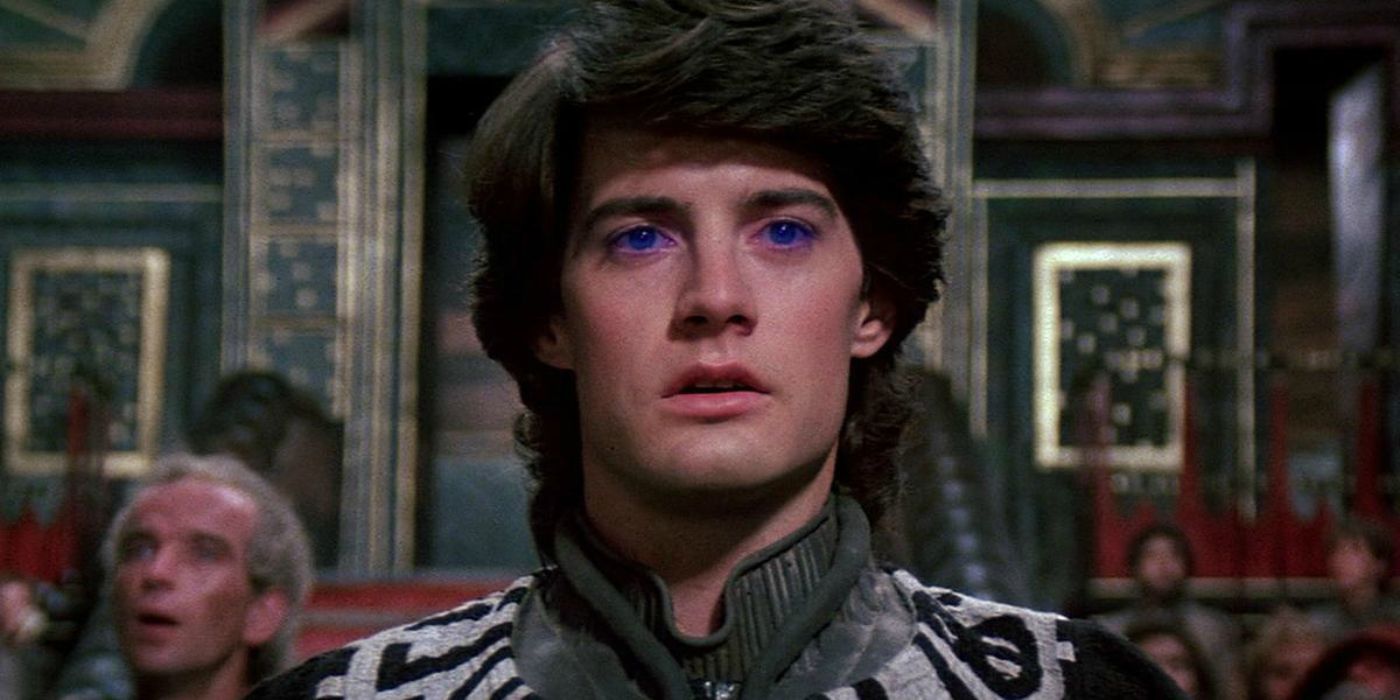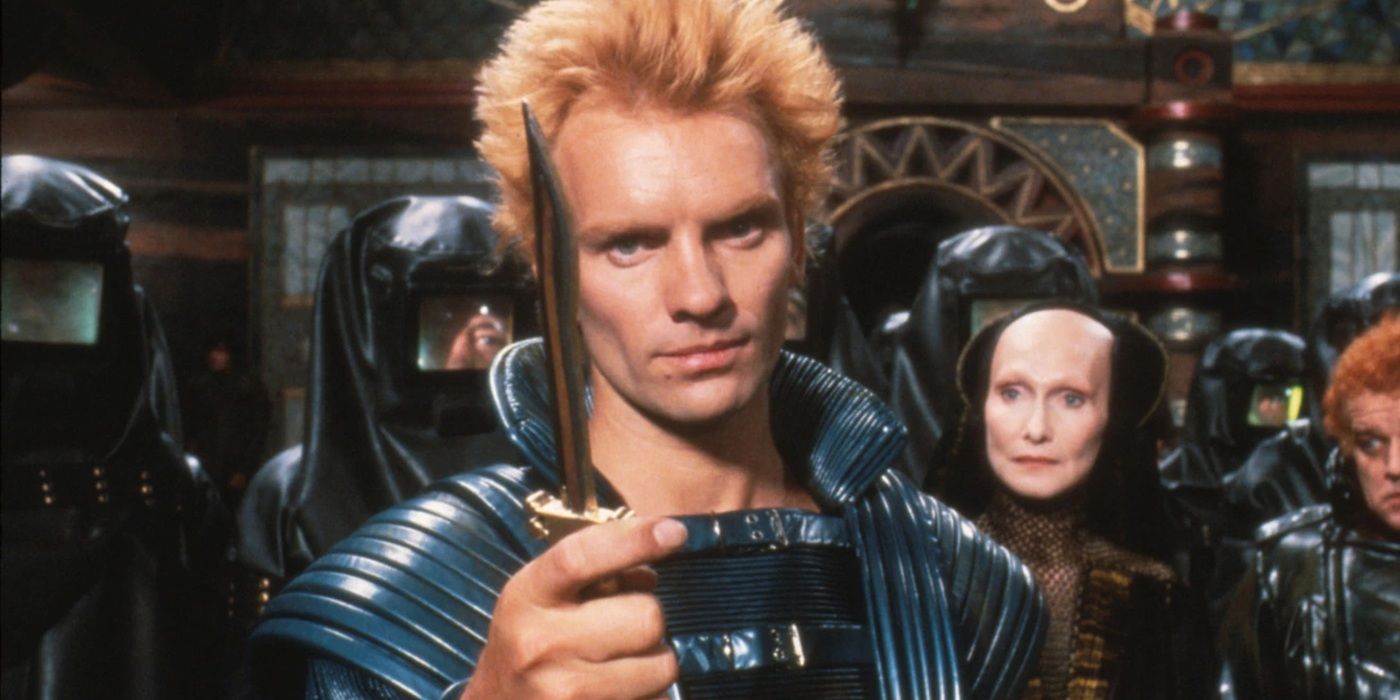
David Lynch, the renowned surrealist director, transformed Frank Herbert’s cherished sci-fi novel “Dune” into a film in 1984. Regrettably, this production became one of the most notorious financial flops in Hollywood, largely due to wooden acting, tacky special effects, uneven pacing, and deviations from the original storyline. The movie was met with widespread criticism, even earning a spot on Gene Siskel and Roger Ebert’s list of 1984’s worst films. So disheartened was Lynch by the film’s reception that he chose not to discuss “Dune” in interviews and even petitioned for his name to be omitted from the credits of a 1988 television version.
Although some people believed that David Lynch failed with Dune, many viewers pointed fingers at producer Dino De Laurentiis for his heavy interference during filming and editing, claiming this was why the movie had uneven pacing and odd narrative choices. A dedicated fan, known as SpiceDiver online, felt so strongly about this that they crafted a fan edit of Dune, aiming to rectify numerous issues in the original version and align more closely with Lynch’s original vision. Unfortunately, archives like archive.org only retain the original edit, and US users can no longer access the high-definition 4K and 1080p versions of this improved film. Nevertheless, you can still appreciate the enhancements made in the initial fan edit. Although it’s impossible to list all the changes here, some key improvements are worth mentioning – these all serve to surpass the theatrical cut.
Chronological Changes in ‘Dune’
In SpiceDiver’s edited version of the film, although the main events unfold in a similar sequence as the original release, it introduces a significant time shift approximately an hour into the movie. Instead of Paul Atreides (Kyle MacLachlan) and his father, Duke Leto (Jürgen Prochnow), meeting with scientist Dr. Kynes (Max von Sydow) and observing spice miners after their arrival on Arrakis, followed by a sandworm attack and the subsequent assassination attempt on Paul, the chronology is reversed. Here, the assassination attempt occurs first, leading Duke Leto to call for a meeting about palace security, before the events of the initial visit to the spice miners take place.
In contrast to the original order, SpiceDiver’s adaptation presents the assassination attempt after the meeting. Subsequently, Leto and Paul journey into the desert with Kynes to witness spice mining. It appears that Lynch planned for these events to unfold in this manner, as the meeting scene in SpiceDiver’s version concludes with Thufir, Leto’s right-hand man (played by Freddie Jones), informing them that Kynes is waiting for them downstairs. The theatrical version, however, leaves out this part of the meeting, possibly to avoid giving the impression that the meeting takes place after Kynes has already been introduced.
SpiceDiver Places Greater Focus on the Fremen

As a die-hard movie enthusiast, let me share my thoughts on SpiceDiver’s extended cut of Dune. One consistent theme in the additional scenes is their connection to the Fremen people. For example, at an early point in SpiceDiver’s version, a Fremen woman named Shadout Mapes (played by Linda Hunt), who serves as a housekeeper in the Atreides’ palace on Arrakis, pays a visit to Lady Jessica (Francesca Annis) in her office. She presents Jessica with a unique “crysknife,” a test of sorts, hoping that Jessica will grasp its importance within Fremen culture and thus confirm herself as the mother of the Fremen’s foretold Messiah. Upon recognizing its significance, Lady Jessica passes this test to Mapes’ delight.
Towards the latter part of the movie, Stilgar, the leader of the Fremen tribe (portrayed by Everett McGill), admits that Mapes shared information about Paul and Lady Jessica with them. He further suggests that they could be the prophesied Messiah and his mother respectively. Unlike the original version, SpiceDiver’s edit demonstrates how Mapes arrived at this deduction initially.
In the theatrical cut, the initial meeting and eventual leadership ascent of Paul and Jessica among the Fremen appears to happen rather quickly. However, SpiceDiver has kindly added several deleted scenes that provide a more detailed picture of the Fremen’s origins and their admiration for Paul. The scene most significant in this regard features a Fremen named Jamis (played by Judd Omen) challenging Paul to a deadly knife fight. After emerging victorious, Paul sheds tears upon killing Jamis, a moment that intrigues the Fremen greatly.
Later on, the Fremen conduct a modest funeral for Jamis, which is attended by his family members including his wife. Afterward, they pass on Jamis’s duties and assets to Paul. This not only clarifies how quickly Paul rises within their ranks, but also portrays the Fremen as a realistic community with unique traditions, governance, and ceremonies, rather than just background characters for Paul to command.
SpiceDiver’s (Slightly) Alternate Ending to ‘Dune’

The differences between the conclusions of SpiceDiver’s Dune adaptation and the movie version are quite substantial, significantly impacting the viewers’ emotional response to the storyline. In the film version, Paul engages in a knife fight with Feyd, the nephew of the Harkonnen Baron (portrayed by José Ferrer), who is played by Sting. Interestingly, as was the case with Jamis, Paul emerges victorious in this confrontation.
Later, Paul demonstrates his abilities by causing rainfall on Dune (Arrakis) for the first time, which leaves his newly born younger sister Alia (Alicia Witt) believing him to be the “Kwisatz Haderach,” an extraordinary individual capable of manipulating space and time with his mental powers. This conclusion left readers of the novel perplexed, as rain could potentially harm Dune’s sandworm population and disrupt its spice production.
In contrast to the original movie ending, the SpiceDiver adaptation carries a more enigmatic tone by incorporating extra dialogues that suggest demands for the Emperor’s imprisonment and Princess Irulan’s marriage to solidify power. Furthermore, instead of summoning rain, Paul in this version employs his abilities to alter time and space.
In my perspective, I find this revised ending to be more aligned with Denis Villeneuve’s anticipated success in Dune: Part Two (2024). Instead of portraying Paul as a conventional hero, it paints him as a complex character, driven by power and ambition, hinting at a God-like self-perception. Unlike the typical savior, he yearns not only for the salvation of Arrakis but also for dominion over the entire universe. This interpretation mirrors the critical stance taken in Frank Herbert’s novel against vengeful and autocratic ideologies, which are embodied by the Harkonnens, the Emperor, and eventually Paul himself. For those interested, you can stream Dune (1984) on Netflix.
Read More
- PI PREDICTION. PI cryptocurrency
- Gold Rate Forecast
- WCT PREDICTION. WCT cryptocurrency
- Guide: 18 PS5, PS4 Games You Should Buy in PS Store’s Extended Play Sale
- LPT PREDICTION. LPT cryptocurrency
- Playmates’ Power Rangers Toyline Teaser Reveals First Lineup of Figures
- Shrek Fans Have Mixed Feelings About New Shrek 5 Character Designs (And There’s A Good Reason)
- FANTASY LIFE i: The Girl Who Steals Time digital pre-orders now available for PS5, PS4, Xbox Series, and PC
- SOL PREDICTION. SOL cryptocurrency
- Solo Leveling Arise Tawata Kanae Guide
2025-06-01 20:32